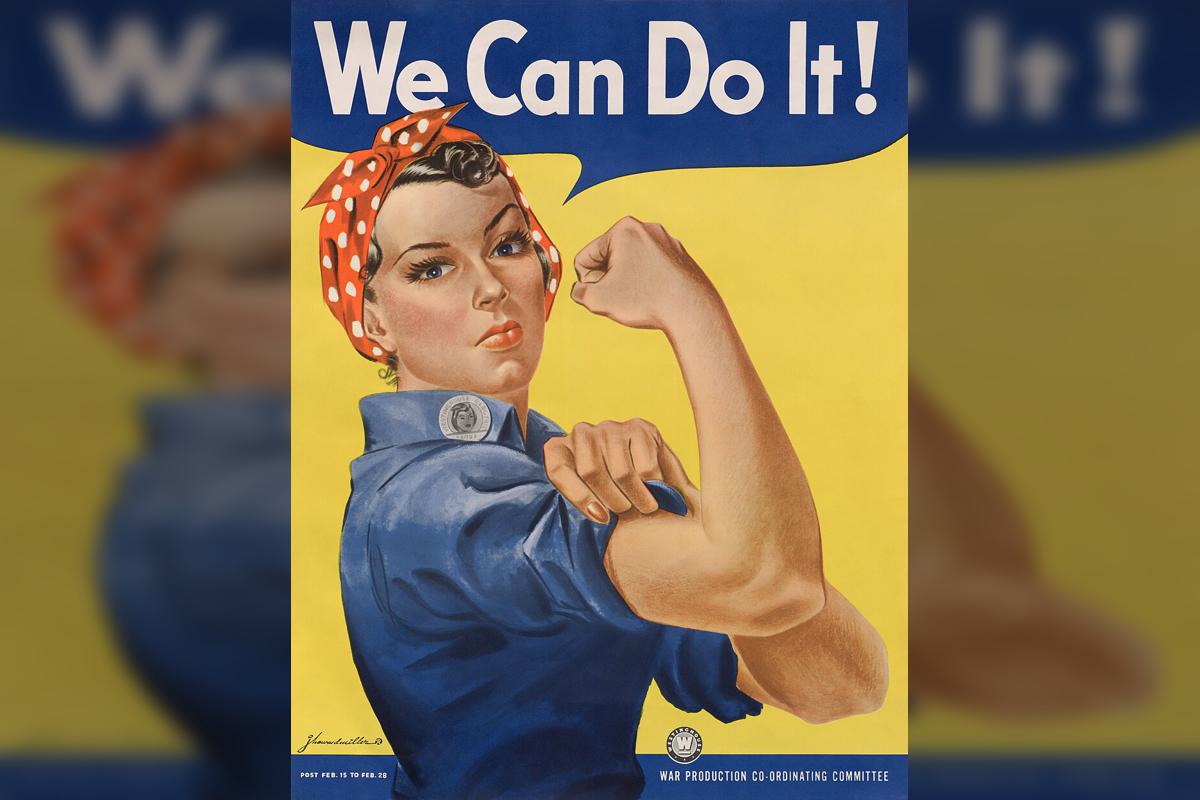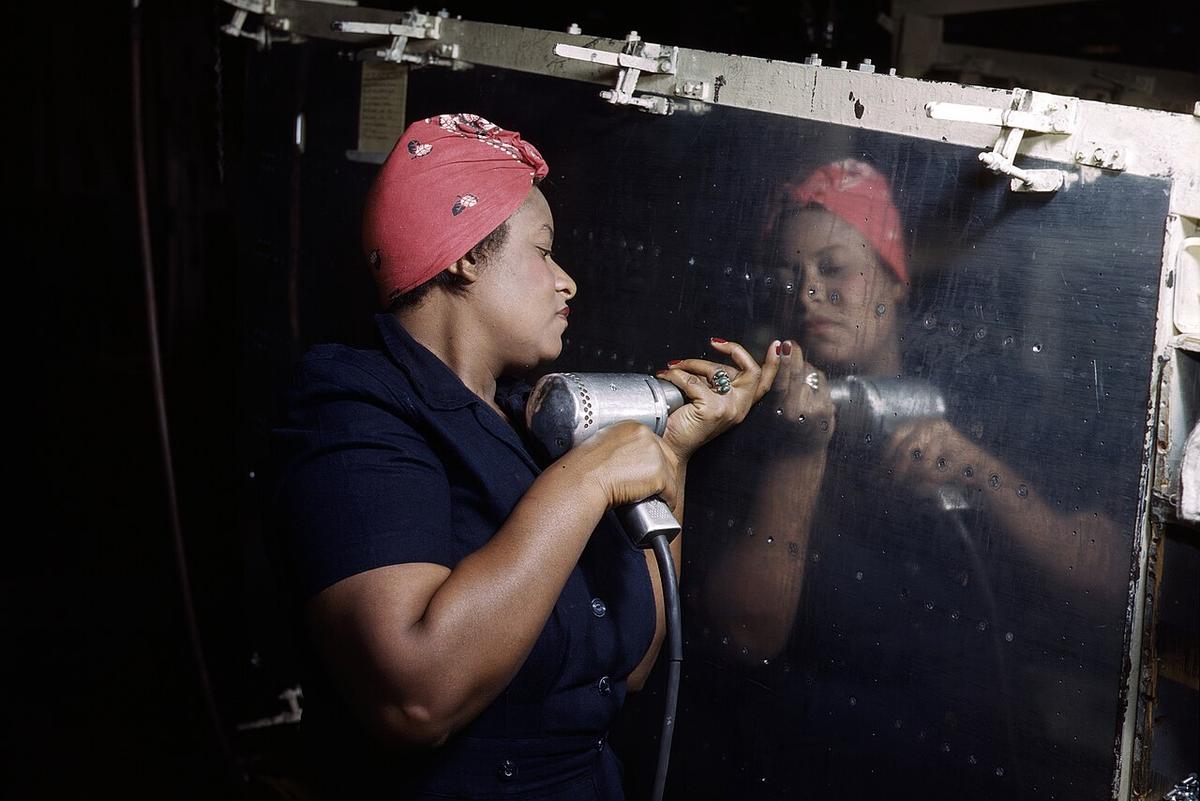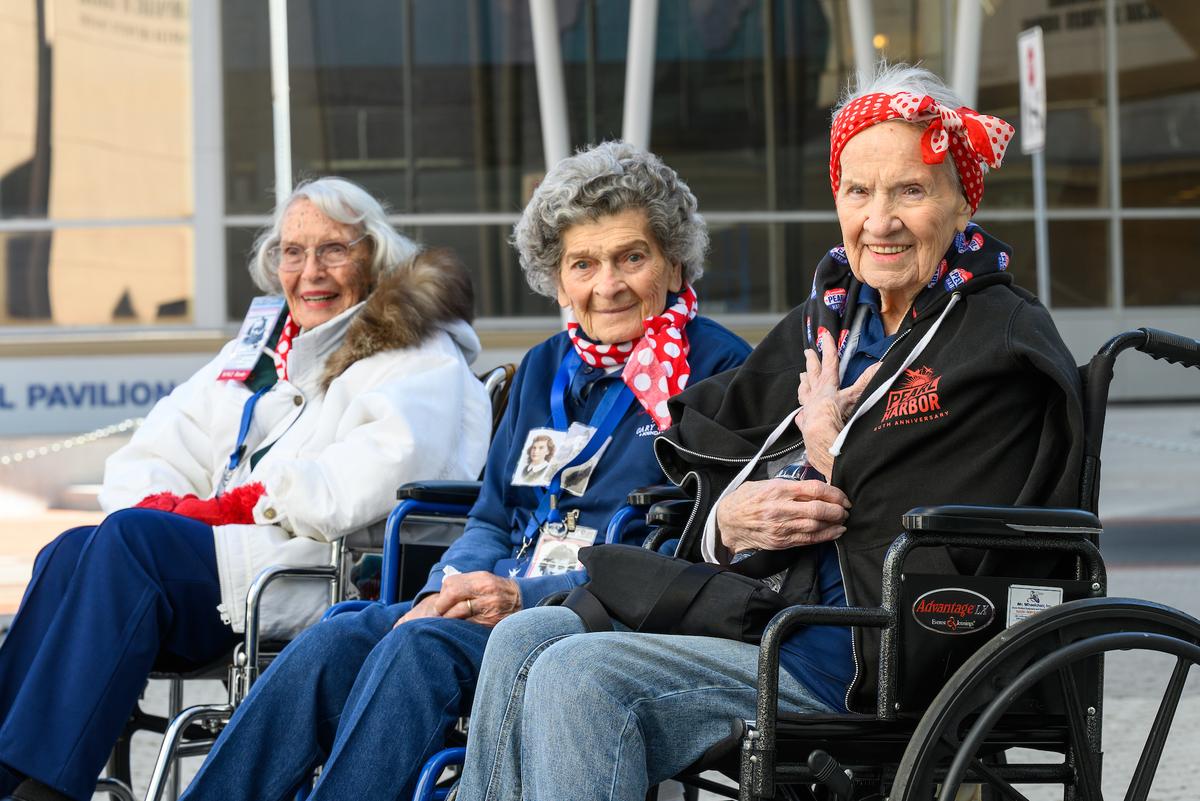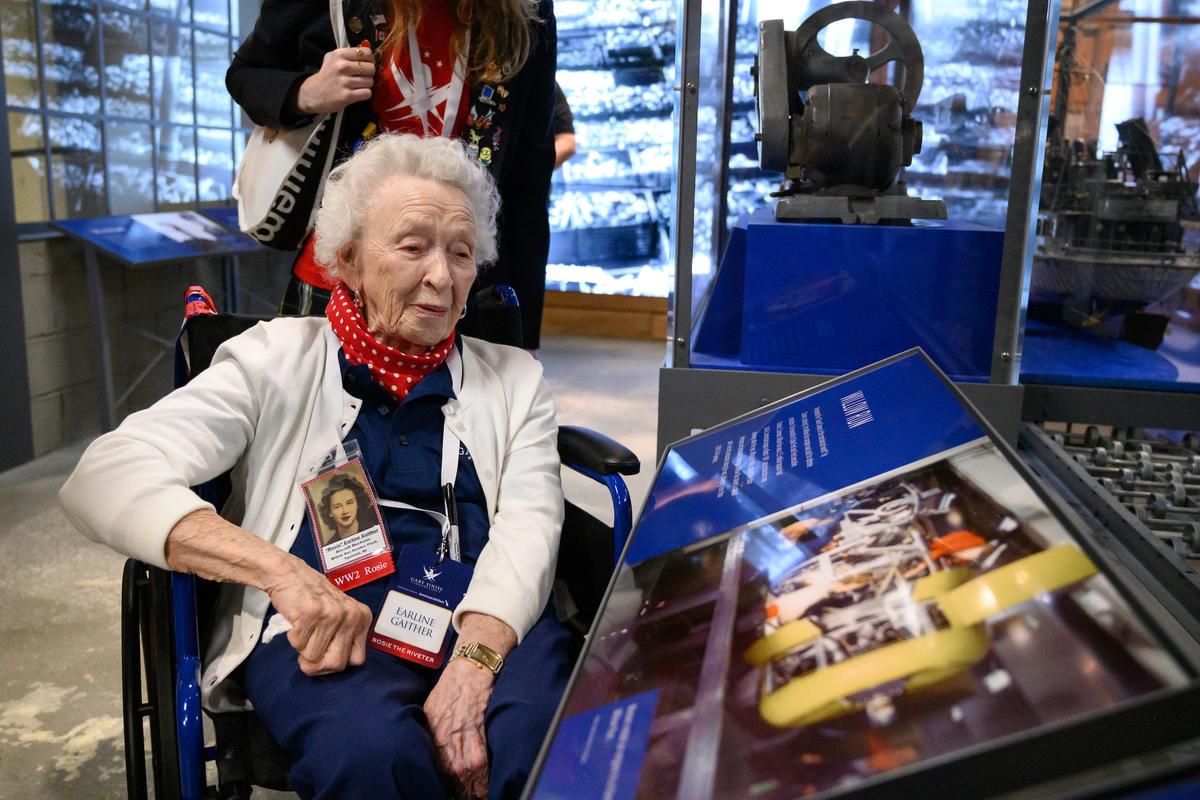New Orleans, Louisiana —(Map)
During World War II, “Rosie the Riveter” was a symbol used to encourage women across the United States to go to work. With millions of men fighting overseas, workers were needed to keep the country going. In late March, the National WWII Museum honored 18 real-life “Rosies” for their service.
When the US entered World War II in 1941, millions of men joined the country’s armed forces, and went off to war. As a result, factories, farms, and offices across the country lost workers just when they were needed the most.

(Source: Adam Cuerden [Public domain], via Wikimedia Commons.)
To fill these positions, women were encouraged to take jobs. Roughly five million women rose to the challenge and took over jobs that had long been held by men. Many of the women were just teenagers at the time. Some women volunteered, spending their time collecting scrap iron, growing “Victory Gardens”, or helping out at the Red Cross.
Many women worked in factories in positions that required long hours of hard work. Thanks to a popular song and government ads, “Rosie the Riveter” became a famous American symbol representing the work these women did.
Riveting
Riveting is a method of joining metal pieces with a special kind of nail. Riveting is hard work, but it was needed to build the planes, ships, and other machines needed for the war effort.

(Source: Alfred T. Palmer [Public domain], via Wikimedia Commons.)
Over time, women who went to work during WWII became known as “Rosies”, no matter what kind of work they did. In April, 2024 all Rosies were collectively honored with a Congressional Gold Medal. That’s the highest award that can be given to a civilian in the US.
On March 21, 18 of these real-life Rosies were honored with a special ceremony at the National WWII Museum in New Orleans. Most of the women are now 100 years old, or close to it.

(Source: Courtesy of The National WWII Museum.)
The Rosies were welcomed like heroes when they arrived. Visitors and museum workers cheered and waved flags. The women were treated like stars, and asked to pose for pictures.
Each woman had a special card with a picture of them from their working days. The card described the sort of work they did. Jane Tucker, who’s now 97, was a welder. She remembers working for ten hours a day, six days a week.

(Source: Courtesy of The National WWII Museum.)
The women say that the work taught them that they could do hard things. Erlinda Avila was only 15 years old when she started working as a riveter. She helped build planes that flew long distances and dropped bombs. NPR says Ms. Avila has the following advice for young women: “Don’t ever give up. You can do it. Believe in yourselves.”
The Rosies were a very important part of the war effort, helping the US and its allies win the war. After the war, many women had to quit so that the returning soldiers could have their jobs back. But the Rosies forever changed the way people thought about women and work.

(Source: Courtesy of The National WWII Museum.)
The real-life Rosies traveled to New Orleans thanks to help from the Gary Sinise Foundation. This group, which works to support veterans, wanted to honor the Rosies, and to make sure that their stories are remembered. The World War II Museum and the foundation are working together to record and preserve the stories of the Rosies.
😕
This map has not been loaded because of your cookie choices. To view the content, you can accept 'Non-necessary' cookies.
